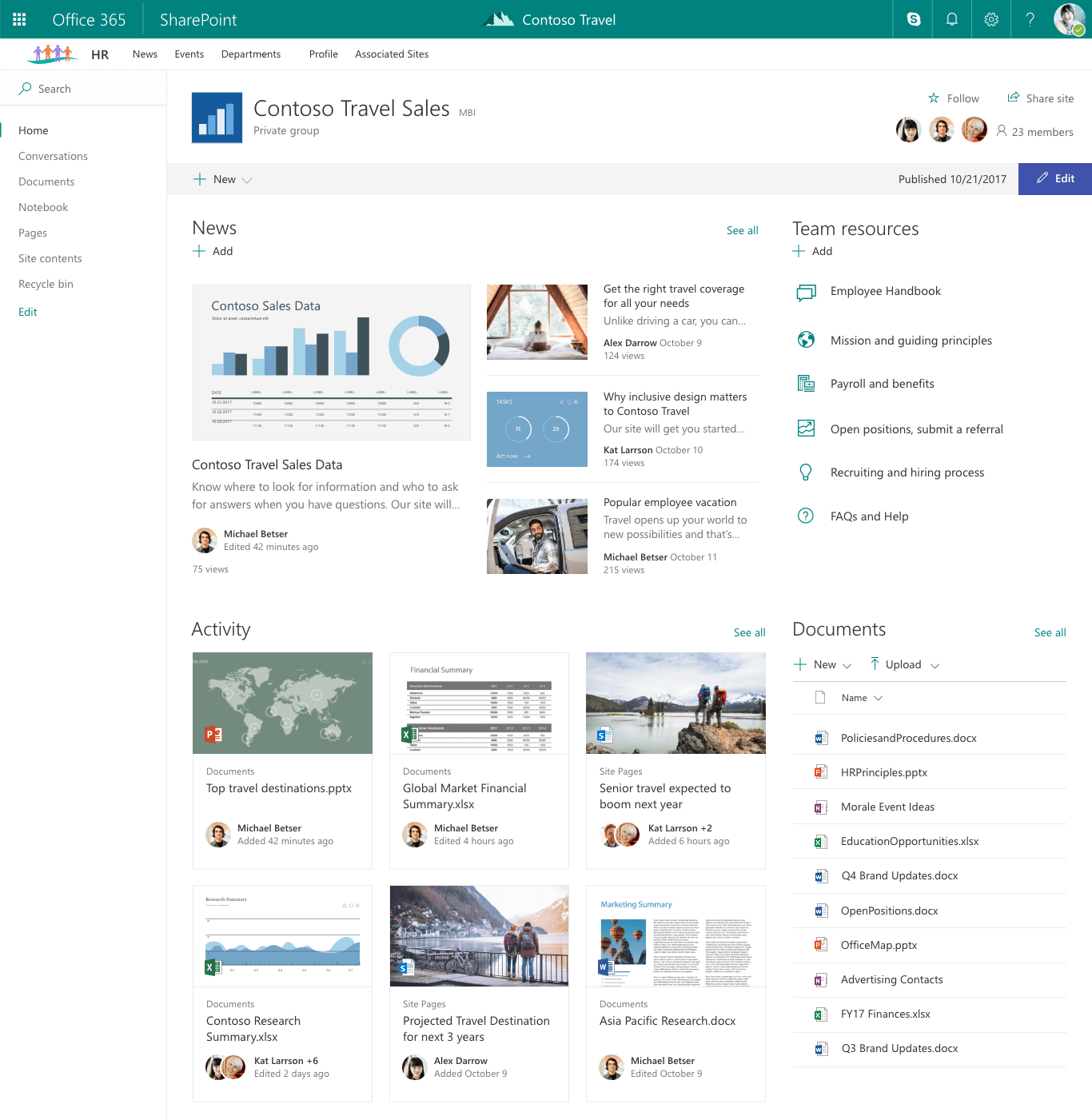If you are planning a SharePoint team site migration, you should be considering which sites or areas of your company collaboration might be better served with a SharePoint hub site.
Using tools like Microsoft’s new migration tool or 3rd party migration products, you can move sites to the Cloud and consider reorganizing sites as you see fit.
But first, here are a few key questions you should consider:
- Do you still need a rigid site and sub-site structure?
- Is it easy for people to find their collaboration sites?
- Is there an opportunity (or need) to improve internal communication across teams?
Do you still need a rigid site and sub-site structure?
You may want to consider changing your approach to structuring sites and site collections, especially if you’ve enforced rules around a site sub-structure with nested sites as that approach is not as relevant anymore.
Permission inheritance and navigation previously encouraged companies to use a nested site structures but this isn’t as important a factor anymore as Joanne Klein describes the advantages of a flat SharePoint site architecture.
If you’ve had internal debate about where a site should be created or how best to organize the hierarchy of sites by department or by team or by region, put the debate to rest and leverage a hub site to loosely link sites through the hub navigation.
Is it easy for people to find their collaboration sites?
Some organizations cite challenges felt among employees trying to find the right SharePoint team sites because of the nature of how sites organically evolved and sub-sites proliferated.
We’ve solved this problem in our Go Intranet Accelerator by providing companies with a Site Directory that lists all team sites and provides a faceted navigation to help people sort or filter to find their site. If you don’t maintain a Site Directory, you may want to consider leveraging a hub site for the sole benefit of enforcing navigation links across a collection of associated sites.
Remember that reporting structures can change. Processes change. Organizational structures change. Hub sites can give you that added flexibility to quickly change the navigation and keep the interrelationships between sites connected.
Is there an opportunity (or need) to improve internal communication across teams?
Some areas of your business might really benefit from hub sites because of the news roll-up functionality. Consider an example like internal project communication. In most organizations it rarely happens, or communication is infrequent at best.
But now it doesn’t have to be that way. Consider connecting project sites to a PMO Hub to promote and aggregate project news and announcements on a more regular basis.
Configuration tips for SharePoint hub sites
- Hubs can be created from a Modern site or Communications Site. It is not recommended to create a hub from a classic SharePoint site.
- Sites (aka associated sites) can attach to only one hub site.
- A hub cannot attach to another hub.
- You can always detach a site from a Hub if you want to attach it to another hub site in the future.
- News, once posted on an associated site, typically takes 5–15mins to index and roll-up to the Hub
- Hubs do not influence permissions.
- Cross site navigation means that the associated sites will have two top level navigation bars — the hub site navigation and the current site navigation. This could be confusing and may require additional configuration.
- Themes designs should take into account the multiple header scenario and be flexible to this type layout.
- Hub News can be filtered if a specific site(s) is too noisy
- Hubs will work with the SharePoint mobile app, so consider communicating to end users which hubs they should follow or find
- You can setup your hub to require approvals. That way, not anyone would be able to attach to a hub but instead they would have to be approved by the hub Site Owner
- Consider the relative pros and cons of having a highly distributed communications model, vs a more curated channel managed by employee communications.
Want to know more about hub sites and why you should use them?
Read part one of our Intranet Managers’s guide to Office 365 hub sites to get your head wrapped around the basics or part two, Common use cases for Office 365 hub sites, to think through how you might put them into action.
You can also take a look at what Microsoft is saying:





.jpeg?bc=white&la=en&mw=416&modified=20251202191043&hash=E64AA9DFFAE8D1AC27890831F714D5B0FA2FEBB2)

